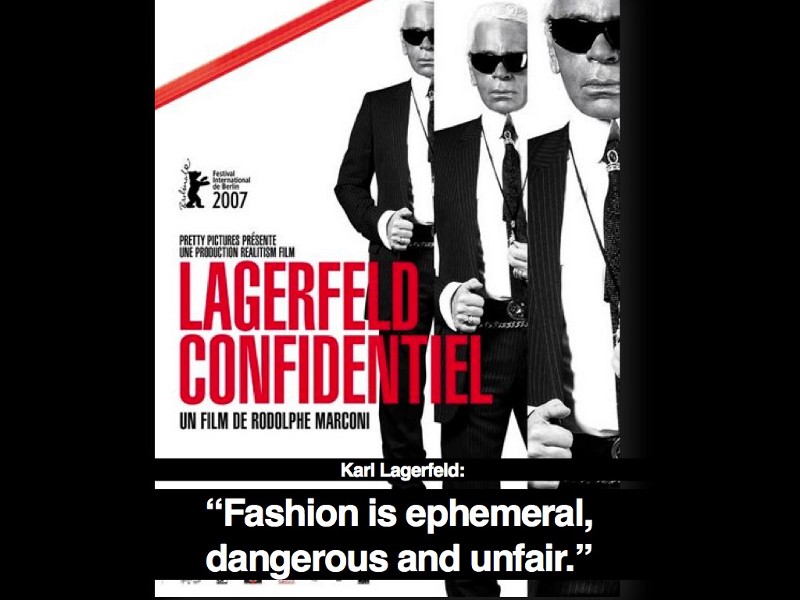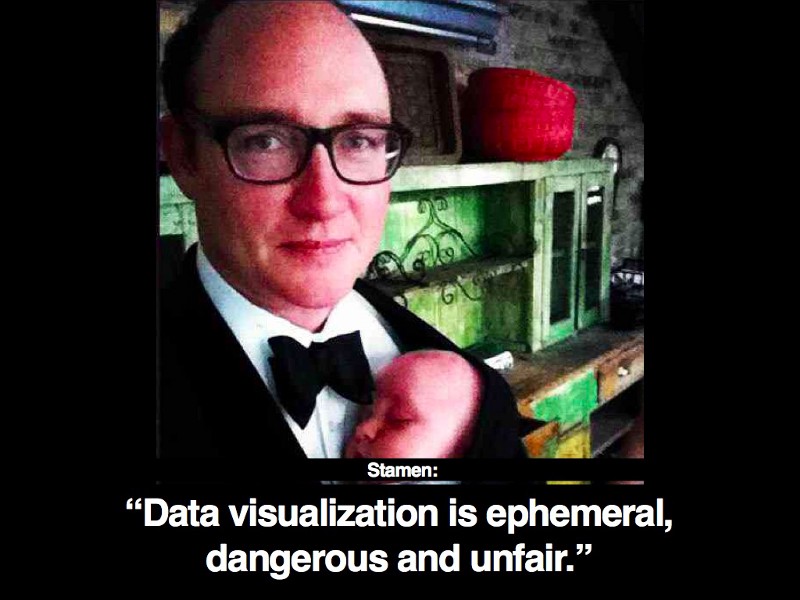Stamen alum Sha Hwang and I shared a stage last night at Arkitektura’s Design Assembly in their lovely Soma showroom. Besides the obvious awesomeness of sharing a stage with Sha (whose work at Trulia is up there with the best), it’s always fun to talk to an audience of designers; their focus on how things look and the kinds of questions they ask bring a certain kind of energy. I also feel like I can let my hair down a bit (what’s left of it), talk about the cultural aspects of what the studio does and explore some new, not-entirely-fleshed out ideas.
One of the ways I’ve been tricking myself into thinking new thoughts is to look at writings about other forms of expression and substitute the medium that’s being discussed — painting, photography, architecture etc. — and replacing that with “data visualization.” So if you take a look at what Group f/64 (Ansel Adams’ cohort) said about photography:
“The members of Group f/64 believe that photography, as an art form, must develop along lines defined by the actualities and limitations of the photographic medium, and must always remain independent of ideological conventions of art and aesthetics that are reminiscent of a period and culture antedating the growth of the medium itself.”
and drop “data visualization” in there:
“The members of Stamen believe that data visualization, as a medium, must develop along lines defined by the actualities and limitations of the data visualization medium, and must always remain independent of ideological conventions of art and aesthetics that are reminiscent of a period and culture antedating the growth of the medium itself.”
you wind up with some things to consider that we can toss into the mix of data visualization manifestos and what all this work is “for.” Who would take seriously a manifesto about what photography if “for” that was this restrictive now? It’s a way to jump the conversation into a more interesting place and start to anticipate a world where these kinds of visualizations are as common as photographs are now; maybe more so.
Another fun one is “fashion.” I’ve been talking about with Ben Cerveny and others for a while now about the idea that Stamen’s approach to mapping and data visualization is more like that of a fashion house than like a graphic design studio or a web development shop. Fashion, far from being superficial fluff on top of real culture, in this view is is highly technical (the Gaultier show at the de Youngconvinced me of this), an endeavor where innovation and new material is key, and is deeply embedded in and often leading aspects of culture.
And then Paola Antonelli asked, on Twitter, where a phrase in the talk came from:
@enjalot @stamen: uh? intriguing statement! pls explain?… “Data visualization will be ephemeral, dangerous and unfair”
— Paola Antonelli (@curiousoctopus) September 27, 2012
So here are the slides:


Looks like I’m going to need some more rings, and maybe some better shades…but I haven’t seen Lagerfeld with a better cummerbund.
